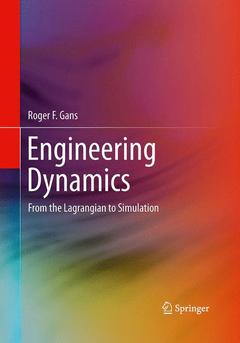Description
Engineering Dynamics, 2013
From the Lagrangian to Simulation
Author: Gans Roger F.
Language: English
Subject for Engineering Dynamics:
Approximative price 52.74 €
In Print (Delivery period: 15 days).
Add to cartPublication date: 08-2016
Support: Print on demand
Approximative price 52.74 €
In Print (Delivery period: 15 days).
Add to cartPublication date: 03-2013
267 p. · 17.8x25.4 cm · Paperback
Description
/li>Contents
/li>Biography
/li>Comment
/li>
This engineering dynamics textbook is aimed at beginning graduate students in mechanical engineering and other related engineering disciplines who need training in dynamics as applied to engineering mechanisms. It introduces the formal mathematical development of Lagrangian mechanics (and its corollaries), while solving numerous engineering applications. The author?s goal is to instill an understanding of the basic physics required for engineering dynamics, while providing a recipe (algorithm) for the simulation of engineering mechanisms such as robots. The book will be reasonably self-contained so that the practicing engineer interested in this area can also make use of it. This book is made accessible to the widest possible audience by numerous, solved examples and diagrams that apply the principles to real engineering applications.
? Provides an applied textbook for intermediate/advanced engineering dynamics courses;
? Discusses Lagrangian mechanics in the context of numerous engineering applications;
? Includes numerous, solved examples, illustrative diagrams and applied exercises in every chapter
Provides an applied textbook for intermediate/advanced engineering dynamics courses
Discusses Lagrangian mechanics in the context of numerous engineering applications
Includes numerous, solved examples, illustrative diagrams and applied exercises in every chapter
Includes supplementary material: sn.pub/extras




